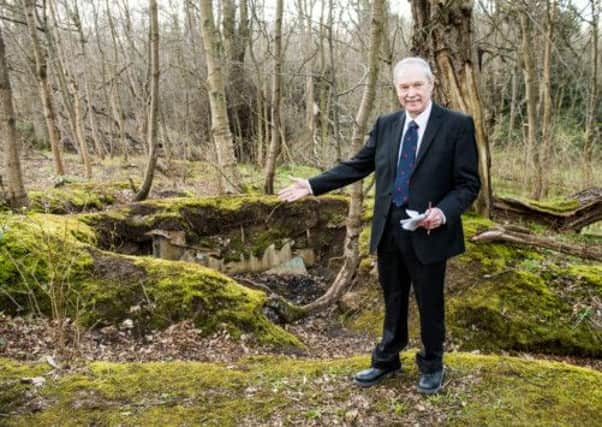Edinburgh Castle guide volunteers help for Dreghorn


Harold Nicolson of Tollcross, a volunteer tour guide at Edinburgh Castle, said he became interested in the trenches at Dreghorn Woods, Colinton, after reading about the campaign to save them in the Evening News.
The network, which will cost an estimated £10,000 to save, was almost forgotten and had been left to become overgrown by trees.
Advertisement
Hide AdAdvertisement
Hide AdIn December, the city council awarded £3500 to enable survey work to take place following months of campaigning by writer and historian Lynne Gladstone-Millar and the News, calling for the trenches to be preserved.
Harold, 65, whose father was a corporal for the Royal Army Medical Corps in the Second World War, said: “I would like the Dreghorn trenches to be open to the public perhaps a few days each week. The fact there are surviving, overgrown trenches in Edinburgh is fascinating – I would like to volunteer with the team to work at the trenches in the future.”
Harold, who is deaf-mute, has been showing visitors with hearing difficulties around Edinburgh Castle for six years.
He said: “When I was a project worker at the deaf club, a visitor from Norway asked me if I would to show him around Edinburgh Castle as a guide.
“I enjoyed it, so I wrote to the superintendent to ask permission to work as a voluntary guide for deaf visitors coming to the Castle.”
Harold, who is an associate member of the Royal British Legion Scotland, said he would also like to see the trenches used as an educational facility for schoolchildren.
He said: “There are around 1.3 million visitors to the Castle a year, and I’m sure many of them may want to visit the trenches.”
An archaeological team made up of the Ministry of Defence’s defence infrastructure organisation, the council and specialists from the University of Glasgow’s Centre for Battlefield Archaeology charted the route and condition of the trenches during the survey.
Advertisement
Hide AdAdvertisement
Hide AdA report on their findings, including recommendations for future management of the site, is expected to be released later this month.
The 16th Battalion, the Royal Scots, dug the trenches in Colinton and Dreghorn – which was open countryside at the time – before they made their way to France.
With trench design rapidly progressing throughout the First World War, experts will also be hoping the exciting study will lay bare the secrets of trench design and any methods used to keep up with the initially superior trench-building German forces.
The survey follows a campaign to save the trenches led by Mrs Gladstone-Millar, whose father, William Ewart Gladstone-Millar, was trained in the trenches before he was sent to the Somme.
She said: “I’m all for volunteers coming forward to act as guides at the trenches, it’s very admirable.
“The level of support we have had for the campaign to save the trenches is simply heart-warming, we’ve had so much feedback on it and every little helps.”